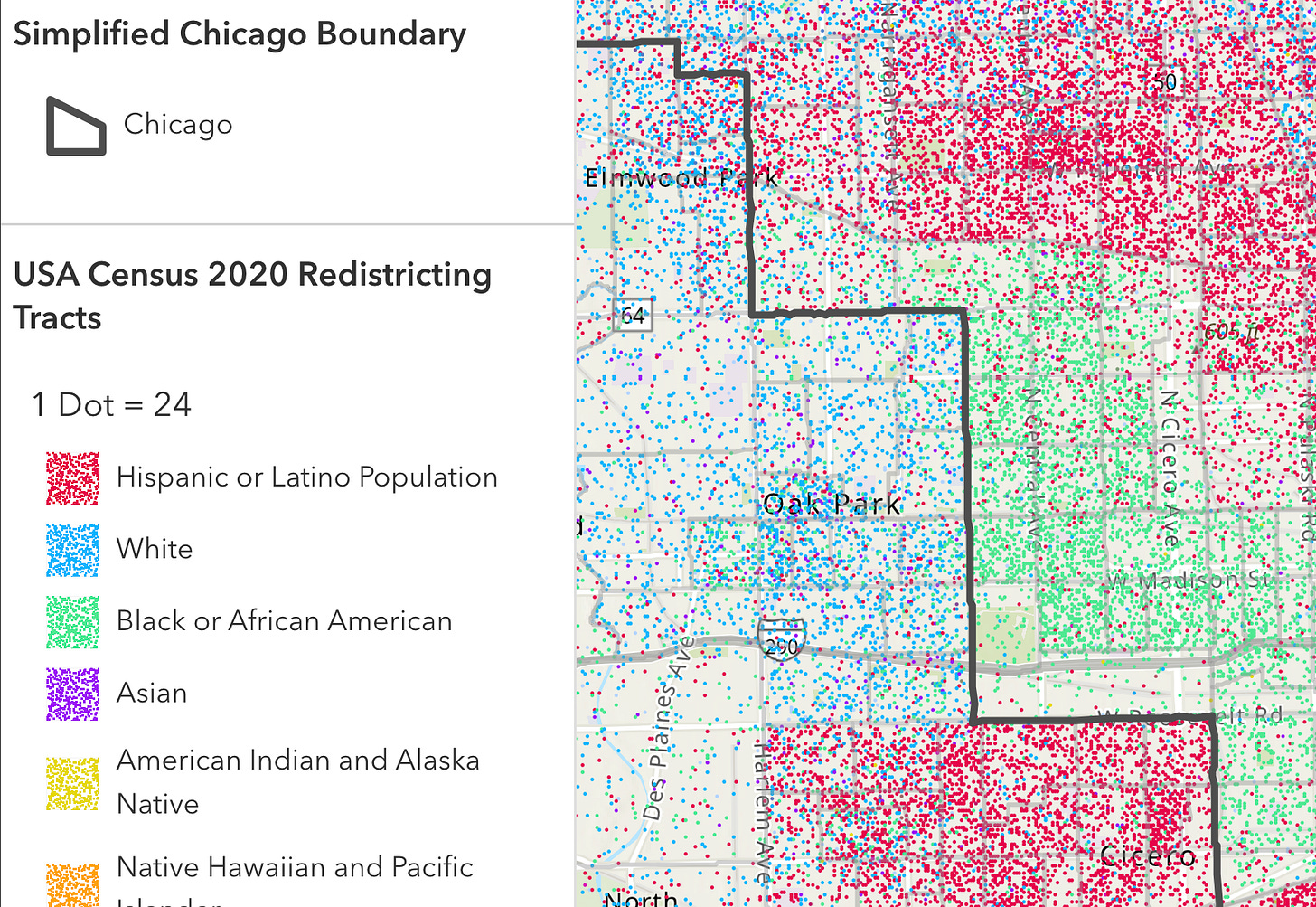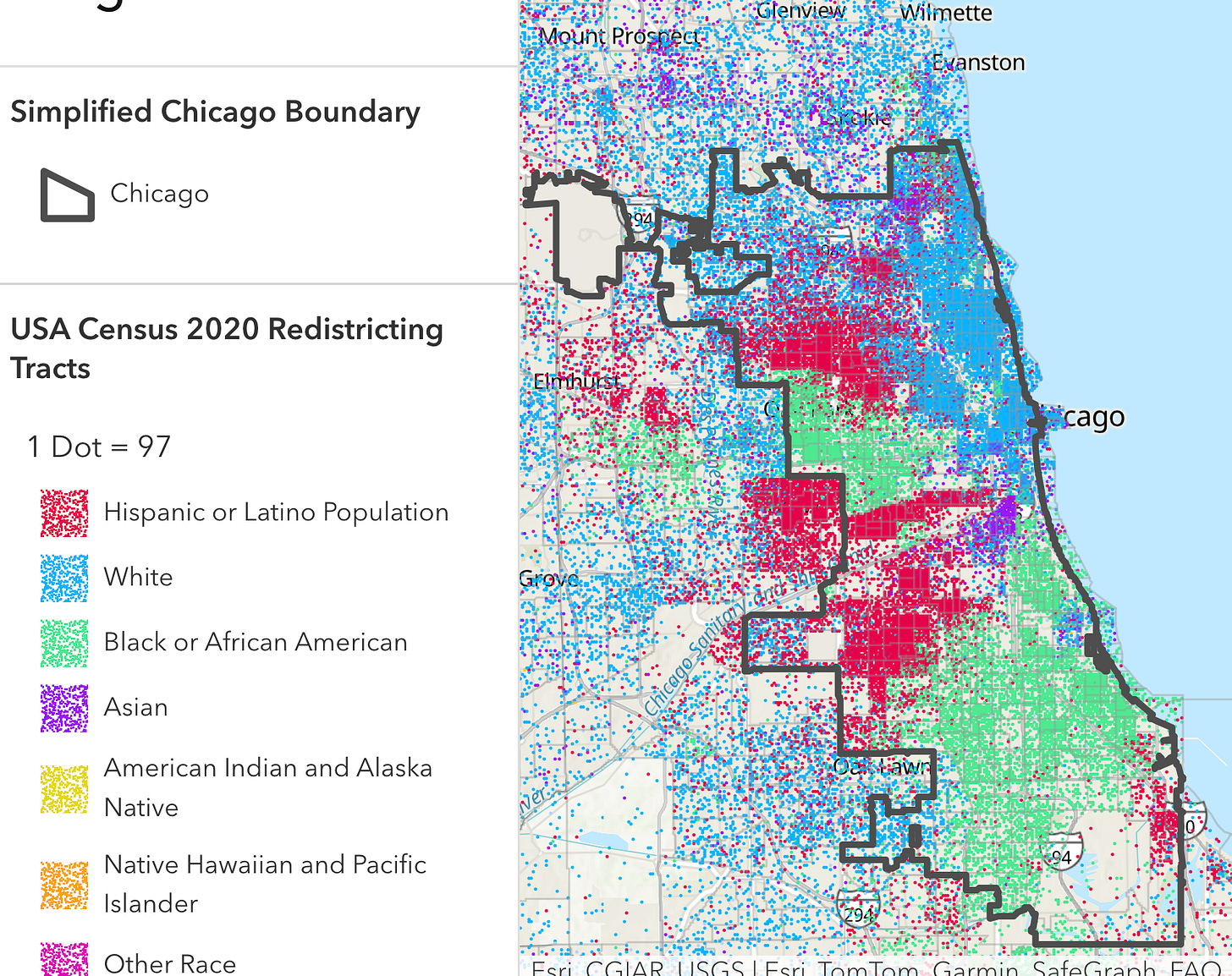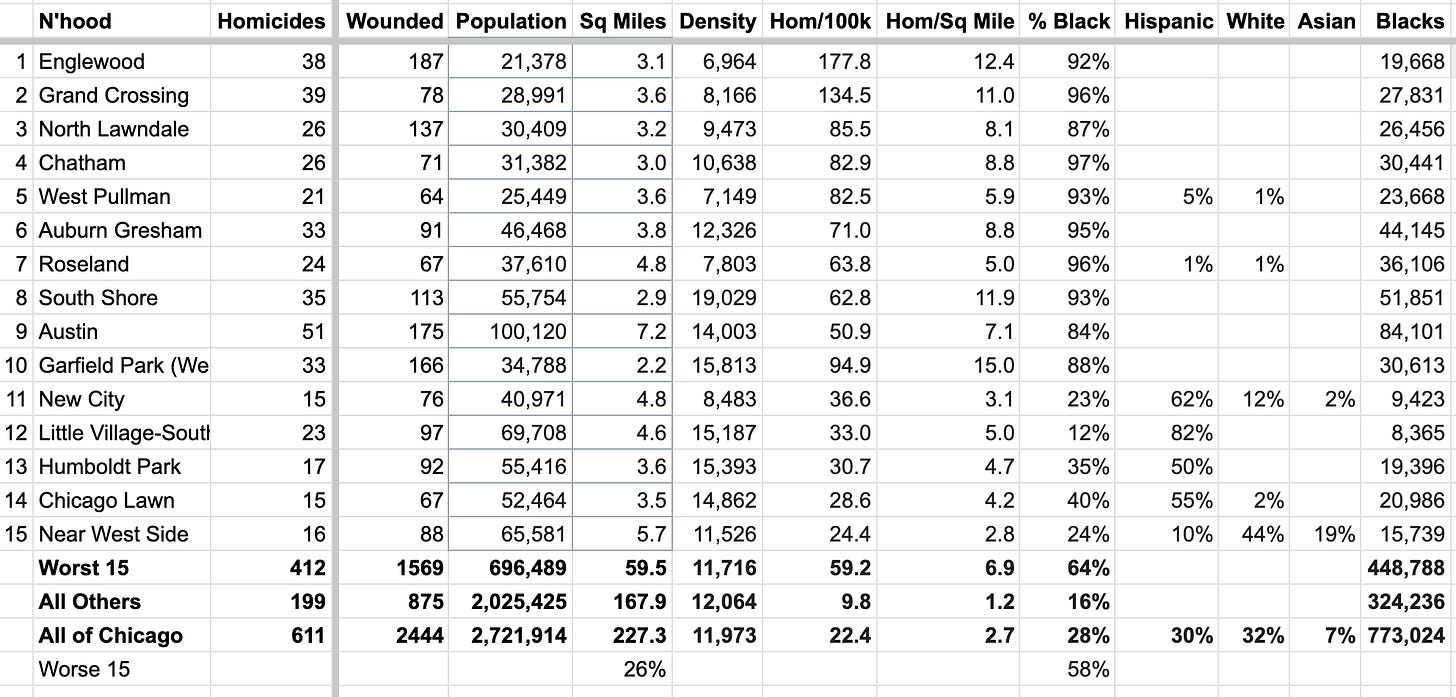Gladwell: "A Tiny % of Urban Blocks Accounted for an Overwhelming Number of a City’s Crimes"
Does it really look like that in Hey Jackass's homicide map of Chicago?
I wanted to return to analyzing the growing conventional wisdom that violent crime in American big cities is restricted to tiny geographies, a streetcorner here, an alley there.
For example, Malcolm Gladwell burbled in The New Yorker this month:
Malcolm Gladwell
A staff writer and the best-selling author of “The Tipping Point” and other books
Something that has always fascinated me about criminology is how much turmoil the field seems to be in. You would think that with phenomena such as crime and violence—which have been with us for as long as human beings have—we would have sorted things out by now. But we haven’t.
When, for example, David Weisburd and Lawrence Sherman made the observation a generation ago that crime was concentrated geographically—that a tiny percentage of urban blocks accounted for an overwhelming number of a city’s crimes, that those same few blocks remained violent year after year, and that this observation was true everywhere—their findings shocked many. People didn’t believe them at first. In the course of all the many centuries that researchers had studied and catalogued crime, it had never (until that moment) occurred to anyone to ask whether violence might be rooted in place, as much as (or more than) it is in people. The shock carried over into the hot-spots policing movement that grew out of the observation about crime’s concentration. Maybe you shouldn’t put the same number of cops on every corner of a city, the hot-spots advocates argued. Maybe you concentrate them in the places where the crime is. What? Seriously? The idea seemed incredibly subversive to the law-enforcement orthodoxy.
It’s not that some people are more shooty than other people, you see, because that would be racist, it’s that some places, the ones with the tragic dirt, are shootier than other places, the ones with the magic dirt.
Okay, well, let’s look at how geographically concentrated homicides were in 2024 in the city of Chicago.
Chicago is not exceptionally murderous, nor is it exceptionally safe. It’s a pretty average big city in terms of murders, except that it’s so huge that it virtually always leads the country in absolute total numbers of homicides. Hence, it’s useful for statistical analyses of homicides because its sample sizes are so large. Plus many Americans have been to the Windy City and have some vague sense of its social geography.
So, here’s the map from Hey Jackass! of all 611 homicides within the Chicago city limits last year
So, what do we see?
Paywall here.
There are big differences in the murder rate in the 77 Chicago neighborhoods delineated by the U. of Chicago sociology department in the 1920s.
(Hey Jackass uses almost exactly the same century old neighborhood borders, with some minor changes like collapsing East Garfield Park and West Garfield Park into a single Garfield Park.)
For example, my wife grew up until 1970 in the Austin neighborhood on the West Side in the 1960s, where there were 51 murders last year.
In contrast, my father grew up blocks away until 1929 across Austin Boulevard in Frank Lloyd Wright’s and Ernest Hemingway’s Oak Park, IL of “broad lawns and narrow minds.” The crime wave that inundated the West Side of Chicago from 1967 onward broke against Oak Park’s adamantine (but covert) resistance.
Here’s Colgate U.’s racial dot map of Oak Park, IL and the Austin neighborhood of Chicago, with blue dots being white, green dots black, and red dots Hispanic:
In contrast, as a yuppie, I lived for 18 years (1982-2000) along the North Lakeshore, first in Lincoln Park (near the zoo), then in Lakeview (near Wrigley Field), and then in Uptown (near not much that a tourist would visit, but still with two beaches within ten minute walks). In my 18 years in Chicago, I heard two shots fired — weird flat-sounding bangs with instantaneous accompaniment of breaking glass, followed by tires squealing.
Each of my old neighborhoods had two murders apiece in 2024.
On the other hand, it doesn’t look like all the murders in Austin happen in just one or two out of the way spaces as Gladwell would imply. The killing zone in 2024 was just the main part of Austin. (The Austin panhandle that wraps around posh, gay Oak Park looks pretty safe, however.)
On the other hand, Chicago’s turn of the century white Democratic powerbrokers — the Daleys, the Pritzkers, potential Presidential candidate Rahm Emanuel, etc. — who became the backbone of the Obama Administration, managed to tear down the inner city black housing projects like Cabrini-Green and Robert Taylor Homes. So the neighborhoods around the Loop have gentrified considerably since I left in 2000.
For example, on my book tour visit to Chicago last fall, I stayed in the Near West Side, a pleasant, seemingly safe walk of two miles from Merchandise Mart on the Chicago River. In the 1980s-1990s, in contrast, I can only recall going to the Near West Side once, because my wife was appearing on a TV show being filmed at Oprah’s new Harpo Studios. (Oprah, a smart woman, is no doubt a good real estate investor.) Otherwise, there was not much there yet.
On the other hand, there were still 16 homicides last year in the Near West Side, although most of them were further inland than where Passage Press booked me to stay.
One theory is that tearing down the housing projects within 5 miles or so of the Loop just pushed the lowlifes out to the peripheries of Chicago, where they clash with the lowlifes who were already there. For example, Hyde Park on the South Lakefront is pretty safe. But once pleasant South Shore a few miles to the south of it, where Jesse Jackson lived while mounting his impressive campaigns for the Democratic presidential nomination in the 1980s, is now in pretty bad shape with 35 murders last year.
Here’s a racial dot map of Chicago in the 2020 Census as made by folks at Colgate U. Green is black and that coincides pretty much with the shootiest neighborhoods.
And here’s Hey Jackass’s breakout of the 15 neighborhoods with the most murders:
So, the per capita homicide rate in the 15 worst neighborhoods is six times as bad (59.2 deaths per 100,000 residents) than in the better 62 neighborhoods. But even the better 62 still have a murder rate about an order of magnitude worse than San Diego.
The 15 shootiest neighborhoods account for 26% of Chicago’s population and 26% of its square miles. Contra Gladwell, that’s a pretty big expanse.
So, to better understand big city homicide rates, is the key variable, as Gladwell implies, blocks?
Or is it blacks?







When I first read the headline I thought Gladwell had said “Blacks” and not “Blocks.” I thought to myself wow Malcolm Gladwell turned a page!
Gladwell’s thesis is easily defeated by driving around Chicago, Detroit, or Baltimore. It’s quite easy to find neighborhoods with abundant evidence of past glory - broad boulevards, architecturally pleasing homes and commercial buildings - that are centers of all the worst socioeconomic indicators today. A neighborhood and its qualities are fundamentally a reflection of the people who live there. This will forever be the case, but because the people most justifiably associated with dysfunction and decline happen to be an important political base for the most powerful political party in the nation, society is browbeaten into looking at everything but the most obvious explanations.